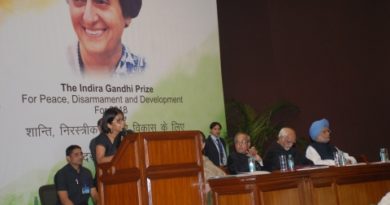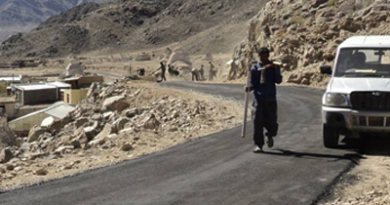India is among the top five disaster-hit countries with $ 79.5 billion losses
Periodic festive post-lockdown (LD) sales are not indicators of the economy booming for sustainable development as a slump may loom large. The problems abound in finances, high government and corporate debt and pressure on banking hit by low unsustainable interest rates. The Indian economy has the capability to sprint at 9 percent with extremely favourable policies and around 7 percent with constraints but actually, the September growth in some sectors and contraction in others raises concern of sustainability. The narrative that the six-month LD has caused massive damage to the economy is partially correct. It aggravated a situation contracting for about 22 months. The 23 percent contraction (minus growth) is only an indicator that doctors failed to read the pulse as physicians are wary now about the illusory disease and its existence. The LD has certainly exacerbated a situation which could have been stemmed with the right prescription. The rating firm ICRA has sounded an alarm that the September recovery may not be sustainable. It says that intra-state goods movement and GST e-way bills increased 9 percent from a year earlier against August contraction of 3.5 percent. But rise in auto production (11 percent), power generation, petrol sales are not reflected in actual retail growth. Apart the calculations are against the massive 23.9 percent slump. It does not see it sustaining beyond November festivities. The part positive outlook on exports makes ICRA cautious as improvements in non-oil merchandise exports may get hit in the fresh waves of supposed covid19 emerging in many trading partners.
HDFC bank CEO Aditya Puri says the problems are not over. Cars and TV sets flying off the shelves hold out promise of a return of 9 percent growth. But the rebound is patchy and the country may end up with 9.5 percent contractions at the end of the year, as per RBI projections. He says if semi-urban rural India grows and there are right infrastructure spends 7 percent growth is not difficult though it might take three years. Skewed LD has devastated the hotel, tourism and eatery industry that just started to get even with finances after a two-decade struggle. Even private health care sector is hit. Nobody questions how the car scrapping policy costs citizens a fortune, severe wealth loss and increases poverty. It merely helps middle men and politicians in cahoots with auto sharks. It needs a deep probe. India’s manufacturing share in the economy has gradually reduced. While the Make in India initiative at its nascent stage may turn the tide, the competition in the region is high with Thailand, Malaysia, Vietnam and Bangladesh. Services have done relatively better in India. Without manufacturing it may not be easy to sustain it. The right spend is in question. Since 2016, the country is through many man-made critical situations that contracted the economy continuously with some better patches in between. If the surging gold prices are taken as indicator, it means apprehensive investors are shying away from making the right investments. The country has taken to wrong priorities. The excessive repeated rebuilding of highways or choking national capital territory with roads that are not needed like the one proposed to Baghpat or projects like Jewar airport or invasive continual construction of excessive infrastructure. Extensive concrete constructions as in Bihar, Odisha, in the new state capitals in Chhattisgarh and Andhra, eroding hills in Uttarakhand, Himachal, North-East and J&K are damaging natural systems of the Himalayas and fragile ecology elsewhere. It is a case for constructing less as the natural disasters are man induced. The recent flooding of Hyderabad or a few years back in Kerala is testimony to the massive damage human hands have done. The cost of the disasters is estimated but not taken into financial accounts. Rather these become sources of further erosion of financial mismanagement. The UN office for Disaster Risk Reduction has revealed that India is among the top five disaster-hit countries with $ 79.5 billion losses between 1998 and 2017. Yes, the country has been committing the mistakes continuously irrespective of the party in power.
Wasteful expenditure has become a national character. The latest being the unnecessary new Parliament building or redeveloping a developed New Delhi central vista costing over Rs 22,000 crore, irrational Rs 1.1 lakh crore bullet train, Rs 6000 crore high-speed rail corridors or several six-lane toll highways (many of these are being rebuilt). The nation has not learnt from the mistakes of hi-fi Hyderabad, Bengaluru or collapse of Amaravati and Raipur. One could argue that people need houses. But a third of new residential constructions are unoccupied in most cities. Jewar or Amaravati type constructions are promoting speculative activities causing severe drain on economy, enough pollution, difficult living conditions and citizens being penalized. The banking system, once world’s best, is collapsing for irrational projects, populist accounts, larger non-repayment of debt and higher operational costs. India is now one of the most degraded countries in the planet with no national policy on spending, securing of public sector units, banking, farms and land use or car scrapping that benefit the sharks. The 2014 election generated hopes of corrections. The BJP made right noises before the polls. Narendra Modi instilled hope. But somewhere the system got derailed and perpetuation of irrational policies continued. The knee-jerk reactions like demonetisation, stressing on wrong construction priorities at the cost of denuding the banks, imposing high cost on travels through high fuel prices, cess and tolls (for which the previous regimes were criticized) only has exacerbated the economy. The promised jobs, a crore a year, could not be provided as the state went into penury. The LD has now made income sustainability difficult as job losses rise despite unlock. The exploitative situation, legally denying rights to the labour and farmers, reminds of the heavy industrialization of 18th and 19th century Europe with its concomitant exploitation leading to the rise of Karl Marx and Friedrich Engels. Course correction is imperative to check slippage to a deep crisis symbolized by many delayed payments by official organisations during December 2019 and March 2020. The private sector during that period itself had started tightening belts. A national dialogue is needed to turn the morass into an opportunity. Modi skilled at taking decisions is capable of initiating it and tick the right boxes. Image courtesy: The Indian Express




